Taking in a rescue dog is one of the most generous and rewarding choices you will ever make.
Whether you find a stray, take in a dog directly from a previous owner, or work with a rescue organization to become a foster or adoptive pawrent, the transition period can be quite stressful for your new pet.
With patience, consistency and compassion, rescue dogs can overcome incredible odds to become loving, well-adjusted companions.
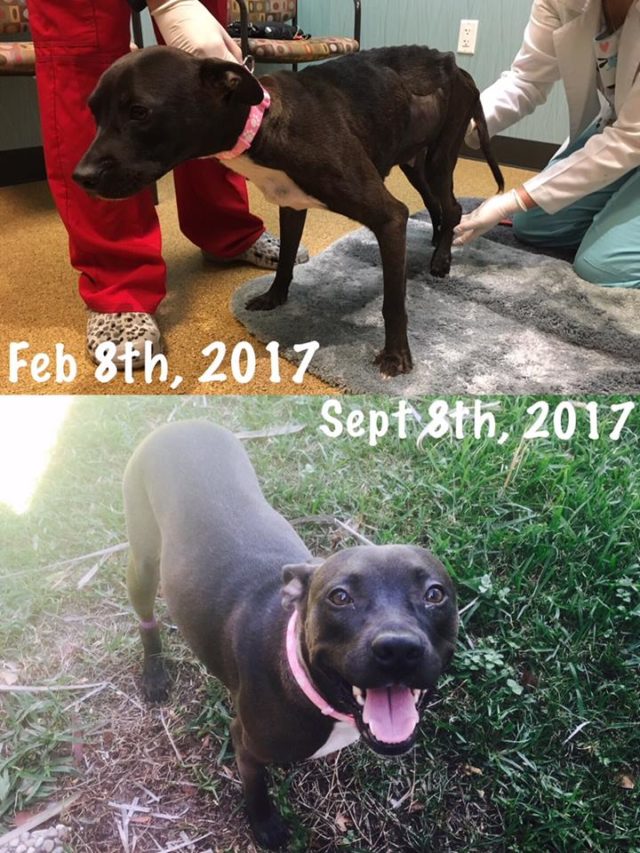
Related Post: How To Help Your Dog Regain Confidence After A Traumatic Incident
Courtney Bellew, the founder and director of Special Needs Animal Rescue & Rehabilitation (SNARR) in White Plains, New York, has assisted countless dogs during their transition into rescue, foster, and forever homes. She was kind enough to share her expert advice and experience with iHeartDogs.
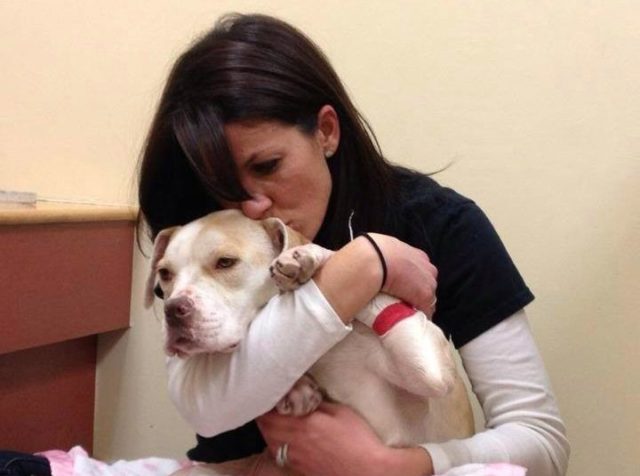
Bellew has seen first-hand the wide range of physical, emotional and behavioral effects past abuse and neglect can have on a rescue dog. Even those that have not suffered at the hands of humans can experience severe anxiety and depression when faced with a drastic life change like rehoming.
“I think just like people, dogs have different personalities and are such unique individuals,” Bellew told iHeartDogs. “While one dog might show no long term issues, another dog might be affected daily by their past. I think it also can depend on the length of the trauma endured and what it was in some cases.”
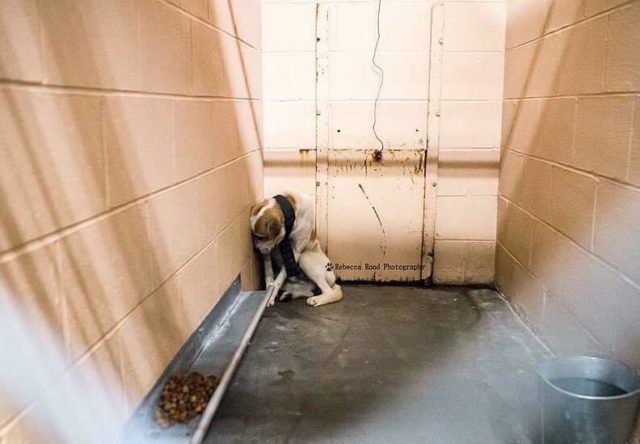
Stewart, the dog in the powerful photo above, was found tied to a tree with a belt and a logging chain in the Georgia wilderness. He was so terrified that rescuers at first mistook him for feral. Bellew describes him as “the most shut down dog we have ever come across in seven-and-a-half years of doing rescue.”
Stewart was so traumatized, rescuers ended up giving him four full days to decompress before even attempting to make contact or remove the thick leather belt from around his neck.
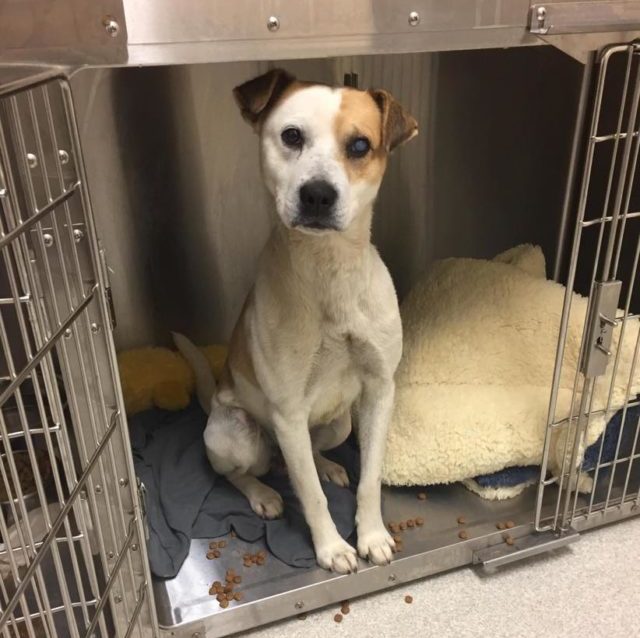
Stewart gradually emerged from his protective shell. His friends at SNARR are still working with him as he awaits his perfect forever family.
“He is slowly but surely coming around and is now enjoying being a dog; something I don’t think he ever was able to do in his past,” Bellew tells iHeartDogs.
Cases like Stewart’s highlight Bellew’s number one piece of advice for owners of traumatized rescue dogs: Have patience.
“A truly traumatized dog needs lots of time to decompress,” she says. “Don’t push their limits, respect their need for space and time.”
She recommends providing a quiet, comfortable space where the dog can get away when feeling overwhelmed and allowing her to seek out attention when ready.
“As much as we want to coddle them and show them it will all be ok, sometimes it’s not the best way of handling things for the long haul.”

Bellew is currently fostering an extremely fearful dog in her home and understands the desire to rush healing and socialization before they are ready.
“I still sneak in some belly rubs and kisses for her and she is still very spoiled, but we are trying to allow her to come out in her own time. I think adopters need to be patient and tailor their plan according to each specific dog.”

In addition to extreme patience, traumatized rescue dogs need structure and limitations. Provide a crate or closed off area when you cannot be home and use a reliable harness and leash on walks. Anxious, insecure dogs may try to bolt when frightened and they are more likely to suffer from destructive separation anxiety when left in unfamiliar surroundings.
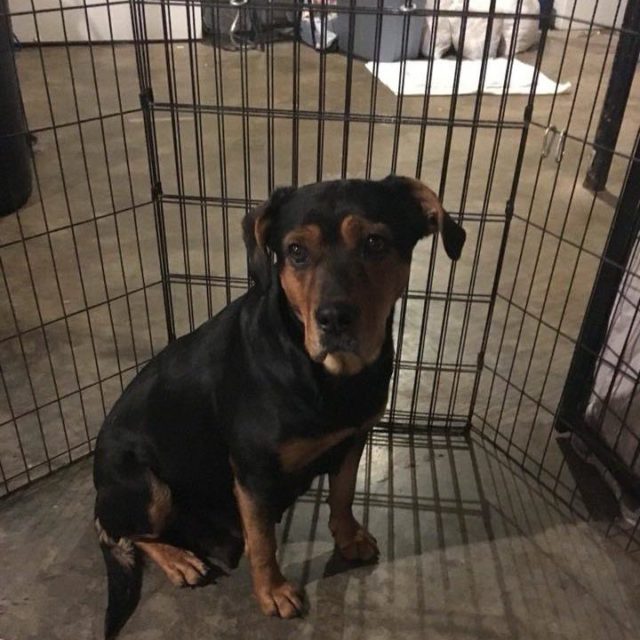
8 Tips To Help You Build A Loving, Trusting Bond With Your Rescue Dog:
1. Start earning trust immediately by speaking softly in a soothing tone.
Even if she does not respond right away, she will begin to associate your voice with kindness and safety.
2. Offer high value, irresistible treats by hand such as chicken or canned dog food.
Seeing you as a source of food will help build trust. Do not force the dog to take the food directly from your hand if she is not ready. Instead, leave it nearby so she can take it in her own time.
3. Find out what motivates your rescue pooch and use it to celebrate even the smallest victories.
Is it treats? Toys? Verbal praise? Belly rubs? Use trial and error to discover the reactions your dog likes most. This will help build your bond and encourage desired behavior.
4. Introduce family members, pets, and friends gradually.
Getting a new dog is an exciting event, but she needs time to adjust to each new stimulus slowly. During introductions, make sure she can escape to her safe spot if she becomes overwhelmed.
5. Keep in mind, many of the daily items and activities we take for granted could be entirely new for your pooch.
Cars, doorbells, vacuum cleaners, strange humans and any number of triggers can induce a fearful reaction.

6. Don’t be afraid to ask for help.
If you are concerned that your rescue dog is having trouble acclimating or displaying concerning behaviors like fear biting or resource guarding, reach out to a trainer with experience in rehabbing traumatized rescue dogs or consult with a veterinary behaviorist.
“A well educated professional can be a very useful tool in helping adopters and dogs make an easier transition,” Bellew says.
7. Consider medication.
Anti-anxiety drugs may also benefit a rescue dog struggling to adjust to a new home.
“Just like people, some dogs need the extra assistance of drugs to help them cope,” Bellew adds. Sometimes they can be used temporarily to help them adjust and decompress. Other times dogs need the meds more long term.”
8. Know that you are doing something amazing for a deserving dog in need!
Your love and commitment mean the world to your rescue dog – even if she is not yet able to show her appreciation. Just ask Stewart, Sheba and the hundreds of other dogs that owe their lives to Courtney Bellew and SNARR Rescue!
iHeartDogs is forever grateful for Courtney’s help with this article and for all the amazing things she and her rescue do for dogs in need.
